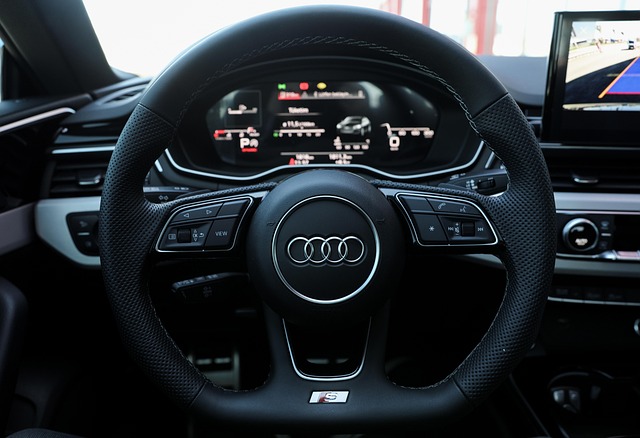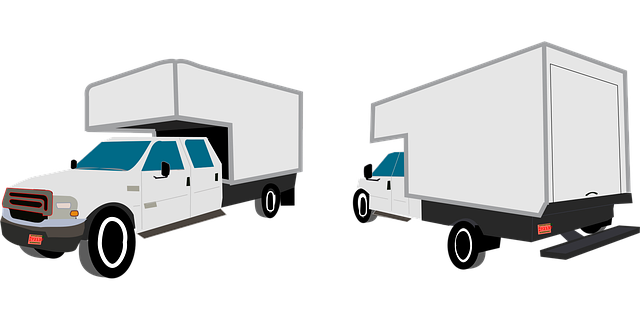Looking to register your car in California? This comprehensive guide walks you through the entire process, from understanding key requirements to gathering essential documents. Learn how to leverage a VIN verifier to check your vehicle’s history, then visit the California DMV to complete registration. Discover the fees involved and get your plates, ensuring your car is legally registered and ready to hit the road. Don’t forget to use a VIN verifier for peace of mind.
- Understand California Car Registration Requirements
- Gather Necessary Documents for Car Registration
- Use VIN Verifier to Check Vehicle History
- Visit California DMV to Register Your Car
- Pay Car Registration Fees and Receive Plate
Understand California Car Registration Requirements

Before registering your car in California, it’s crucial to understand the state’s specific requirements. California requires all vehicles operating on its roads to be properly registered and inspected. This includes a thorough examination of the vehicle’s identification number (VIN) to ensure authenticity and ownership. The process involves submitting essential documents, such as proof of insurance, a completed registration form, and passing an emission test in most cases.
For added convenience, many Californians opt for a mobile VIN inspection or utilize a vin verifier service to streamline the initial registration process. These services allow you to verify your vehicle’s history, including its previous owners and maintenance records, right from the comfort of your home or garage. By adhering to these requirements and taking advantage of modern tools like mobile vin inspection and vin verifier, you can ensure a smooth car registration experience in California.
Gather Necessary Documents for Car Registration

Before registering your car in California, it’s crucial to gather all the essential documents required by the Department of Motor Vehicles (DMV). This process is streamlined with the help of a vin verifier, which can ensure that your vehicle’s unique Vehicle Identification Number (VIN) is accurate and matches the details on record. Start by collecting your car’s title, a valid driver’s license or ID card, proof of insurance, and a completed application for registration and title (Form DVF-14). Additionally, you might need to provide a mobile vin verifier or undergo a vin inspection if there are any discrepancies or the vehicle is new. These steps ensure that your car meets all legal requirements before hitting the California roads.
Use VIN Verifier to Check Vehicle History

Before proceeding with registration, it’s crucial to conduct a thorough vehicle history check using a reliable VIN Verifier tool. This step is essential as it provides critical insights into the car’s past, including any accidents, mechanical issues, or reported damage. By performing a VIN inspection, you can ensure that the vehicle is safe and meets California’s registration requirements.
A mobile vin verification service allows for convenient and efficient access to this information. With just a few simple steps, you can get instant details about the car’s history, making it easier to make informed decisions. This modern approach, facilitated by advanced technology, simplifies the process and adds an extra layer of protection when registering your vehicle in California.
Visit California DMV to Register Your Car

To register your car in California, the first step is to visit a local DMV (Department of Motor Vehicles) office. This is where you’ll initiate the registration process and provide all the necessary documentation for your vehicle. Bring along important paperwork such as proof of ownership, vehicle identification number (VIN), and any other required documents like insurance information or evidence of compliance with emissions standards. The VIN is a crucial piece of information that can be easily verified by using a mobile vin inspection tool to ensure its accuracy before proceeding.
At the DMV, you’ll complete an application for vehicle registration and pay the associated fees. Once your application is approved, they will issue you a California registration certificate, which should be displayed on your vehicle at all times. Keep in mind that specific requirements may vary based on your vehicle’s age, so it’s always best to check with the DMV or utilize their online resources for up-to-date information regarding car registration procedures.
Pay Car Registration Fees and Receive Plate

After verifying your vehicle’s eligibility for registration through a process like a mobile VIN verifier or mobile VIN inspection, it’s time to pay the registration fees. These fees vary based on the type and age of your vehicle. You can typically pay online, by phone, or in person at a California Department of Motor Vehicles (DMV) office. Once your payment is processed, the DMV will issue a registration certificate and license plates for your car.
Before you receive your plates, make sure to review all the information on the registration documents carefully. This includes your vehicle’s identification number (VIN), which is crucial for future reference and can be verified by using a mobile VIN verifier or inspection service. With these documents in hand, you can now legally operate your vehicle on California roads.
Registering a car in California involves understanding key requirements, gathering essential documents, utilizing a VIN verifier for vehicle history checks, and visiting the DMV. By following these steps and ensuring all necessary information is accurate, you’ll successfully navigate the process. Remember to keep your registration up-to-date and always use a reliable VIN verifier to maintain your vehicle’s integrity.
